A suspected Chinese surveillance balloon flying over the US was yesterday condemned by officials in Taipei and sparked calls for the government to plan countermeasures.
The Pentagon on Thursday said it had detected a Chinese surveillance balloon flying over the country.
Beijing has said the balloon is a civilian meteorological device that drifted into US territory after being blown off course.
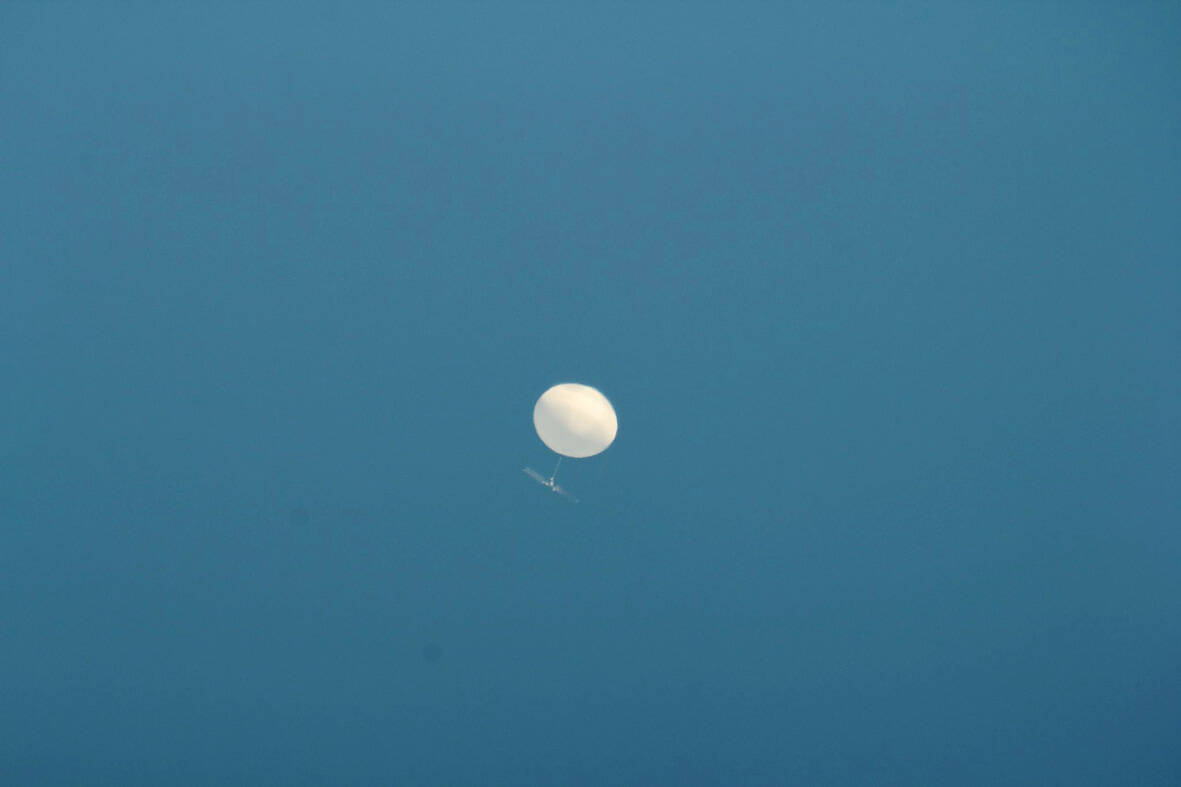
Photo courtesy of the Central Weather Bureau
The National Security Bureau and Ministry of National Defense should investigate whether surveillance balloons could be used against Taiwan and prepare to respond to such acts, Chinese Nationalist Party (KMT) Legislator Johnny Chiang (江啟臣) said.
US Secretary of State Antony Blinken’s postponement of his visit to China as a result of the incident was a foreseeable consequence arising from the competition for power between the two countries, he added.
The Ministry of Foreign Affairs condemned China in a statement, saying that Beijing’s behavior breached international laws and was “unacceptable to the community of civilized nations.”
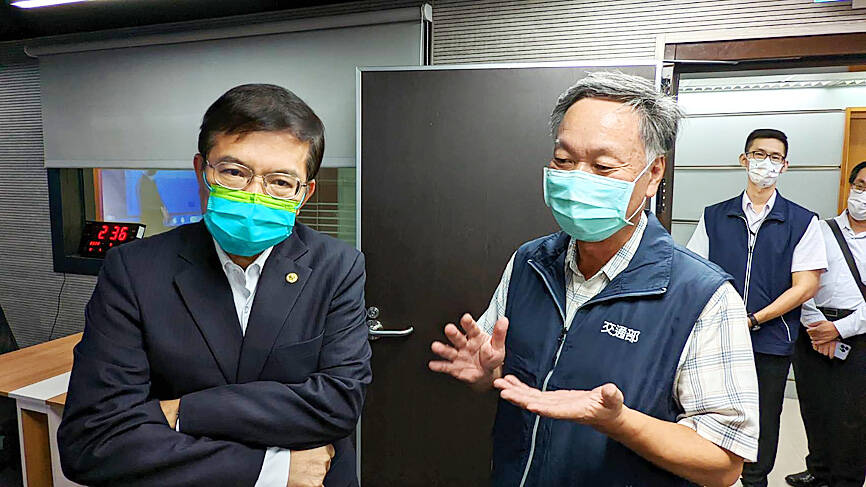
Photo: Cheng Wei-chi, Taipei Times
China should cease all activities that infringe on the sovereignty of other nations or cause instability in the region, it said.
Premier Chen Chien-jen (陳建仁) urged China to respect the sovereign airspace of other countries, as that would facilitate peace, mutual aid and cooperation between nations.
Lu Yeh-chung (盧業中), a professor in National Chengchi University’s Department of Diplomacy, said the balloon incident showed the “extreme lack of trust” between the US and China.
The two countries are likely to remain locked in competition for some time, Lu added.
That Blinken would delay a long-planned visit to Beijing over the incident hinted at other under-the-table disputes that might have occurred between the US and China while they were preparing for the visit, he said.
The strong response the incident elicited from Washington was diplomatically appropriate, as national security is an issue of utmost importance to the US, Lu said, adding that failing to send a clear signal could embolden China.
Similar balloons were first spotted in Japan’s Miyagi Prefecture in June 2020, although no country claimed ownership of the craft at the time, Central Weather Bureau Director-General Cheng Ming-dean (鄭明典) said.
Bureau personnel observed a balloon of the same type hovering over Taipei in September 2021, and members of the public reported seeing another in March last year, this time above Taipei International Airport (Songshan airport), he said.
The objects were in the two areas for about three hours and photographs were taken of them, Cheng said.
Civilian weather balloons — typically 2m wide and made of rubber — usually hover close to the launch site and at a height of no more than 30km, he said.
The Chinese balloons observed in the Taiwan incidents were no less than 20m wide, and their range and altitude suggest different materials were used to construct them, he said.
Additional reporting by Chou Ming-hung
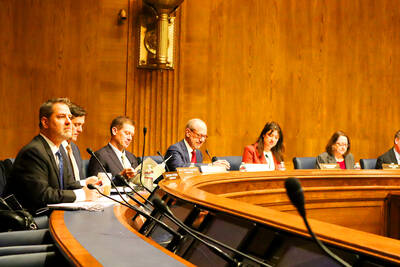
LIMITS: While China increases military pressure on Taiwan and expands its use of cognitive warfare, it is unwilling to target tech supply chains, the report said US and Taiwan military officials have warned that the Chinese People’s Liberation Army (PLA) could implement a blockade within “a matter of hours” and need only “minimal conversion time” prior to an attack on Taiwan, a report released on Tuesday by the US Senate’s China Economic and Security Review Commission said. “While there is no indication that China is planning an imminent attack, the United States and its allies and partners can no longer assume that a Taiwan contingency is a distant possibility for which they would have ample time to prepare,” it said. The commission made the comments in its annual
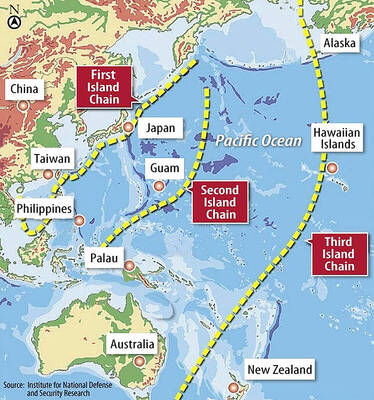
DETERMINATION: Beijing’s actions toward Tokyo have drawn international attention, but would likely bolster regional coordination and defense networks, the report said Japanese Prime Minister Sanae Takaichi’s administration is likely to prioritize security reforms and deterrence in the face of recent “hybrid” threats from China, the National Security Bureau (NSB) said. The bureau made the assessment in a written report to the Legislative Yuan ahead of an oral report and questions-and-answers session at the legislature’s Foreign Affairs and National Defense Committee tomorrow. The key points of Japan’s security reforms would be to reinforce security cooperation with the US, including enhancing defense deployment in the first island chain, pushing forward the integrated command and operations of the Japan Self-Defense Forces and US Forces Japan, as
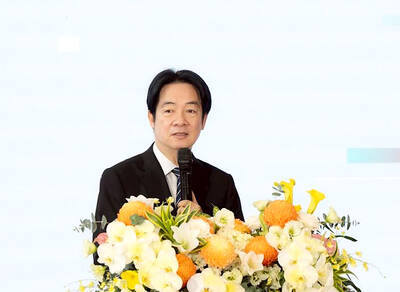
‘TROUBLEMAKER’: Most countries believe that it is China — rather than Taiwan — that is undermining regional peace and stability with its coercive tactics, the president said China should restrain itself and refrain from being a troublemaker that sabotages peace and stability in the Indo-Pacific region, President William Lai (賴清德) said yesterday. Lai made the remarks after China Coast Guard vessels sailed into disputed waters off the Senkaku Islands — known as the Diaoyutai Islands (釣魚台) in Taiwan — following a remark Japanese Prime Minister Sanae Takaichi made regarding Taiwan. Takaichi during a parliamentary session on Nov. 7 said that a “Taiwan contingency” involving a Chinese naval blockade could qualify as a “survival-threatening situation” for Japan, and trigger Tokyo’s deployment of its military for defense. Asked about the escalating tensions
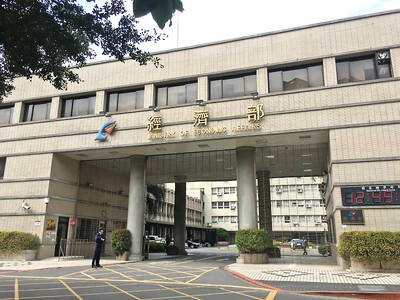
The Ministry of Economic Affairs said it plans to revise the export control list for strategic high-tech products by adding 18 items under three categories — advanced 3D printing equipment, advanced semiconductor equipment and quantum computers — which would require local manufacturers to obtain licenses for their export. The ministry’s announcement yesterday came as the International Trade Administration issued a 60-day preview period for planned revisions to the Export Control List for Dual Use Items and Technology (軍商兩用貨品及技術出口管制清單) and the Common Military List (一般軍用貨品清單), which fall under regulations governing export destinations for strategic high-tech commodities and specific strategic high-tech commodities. The